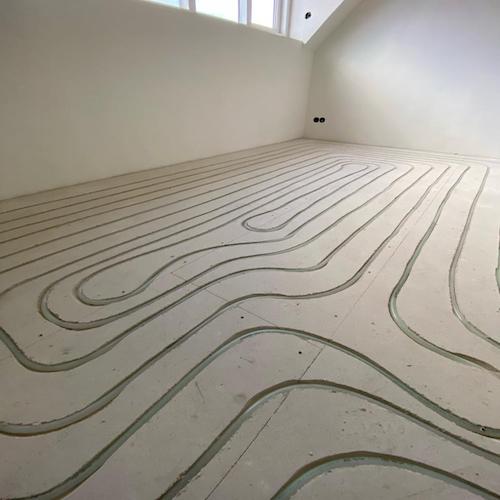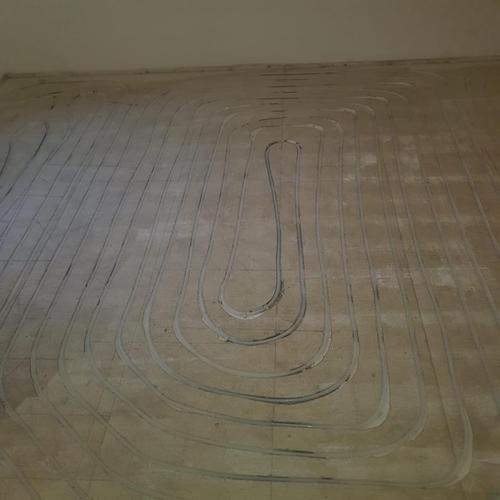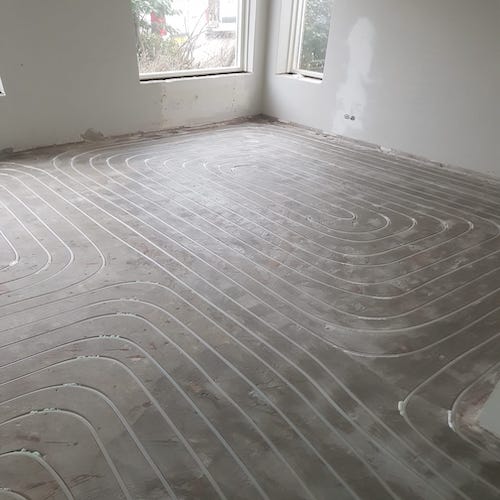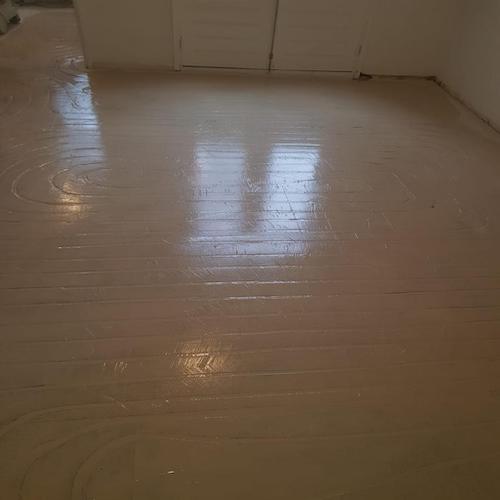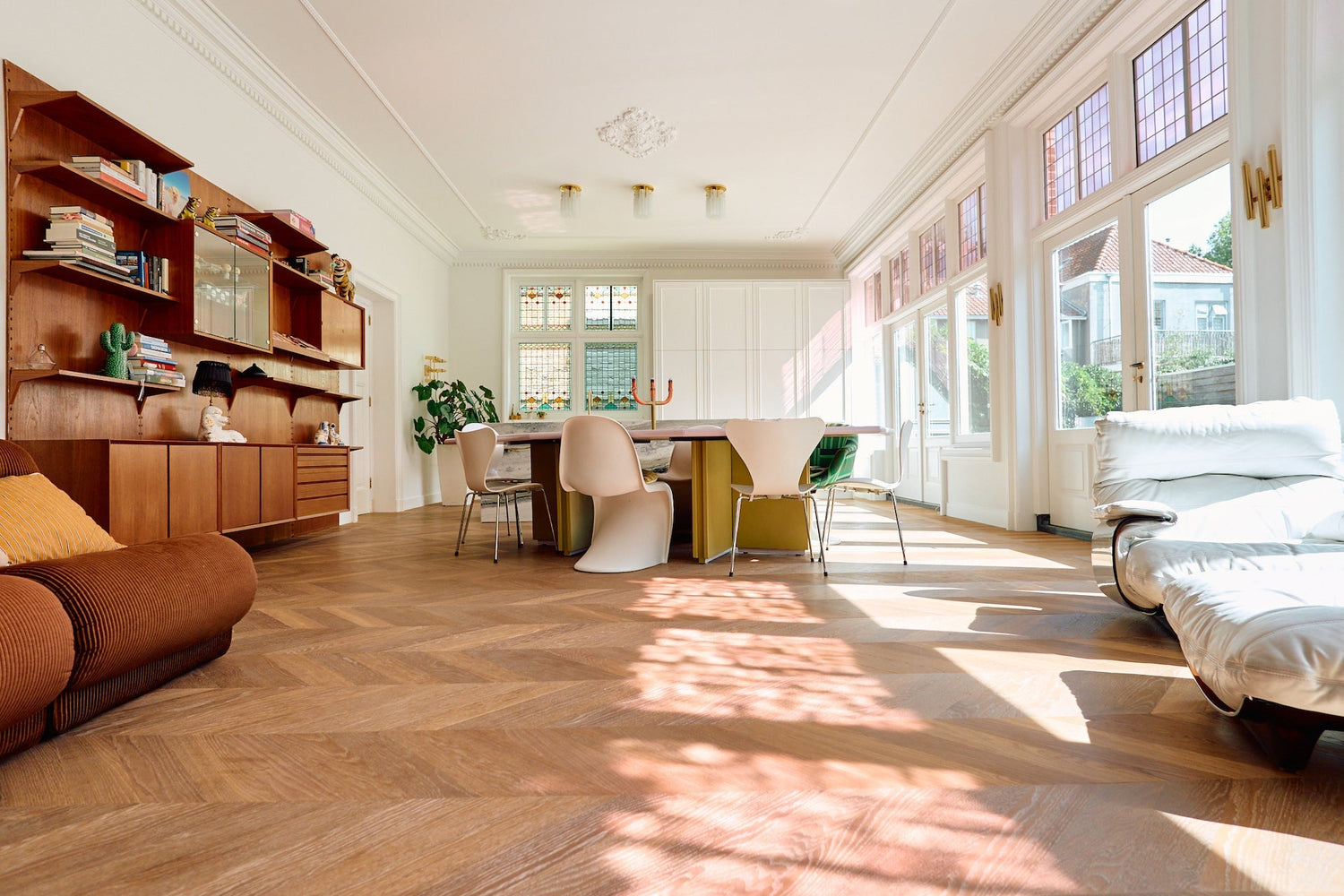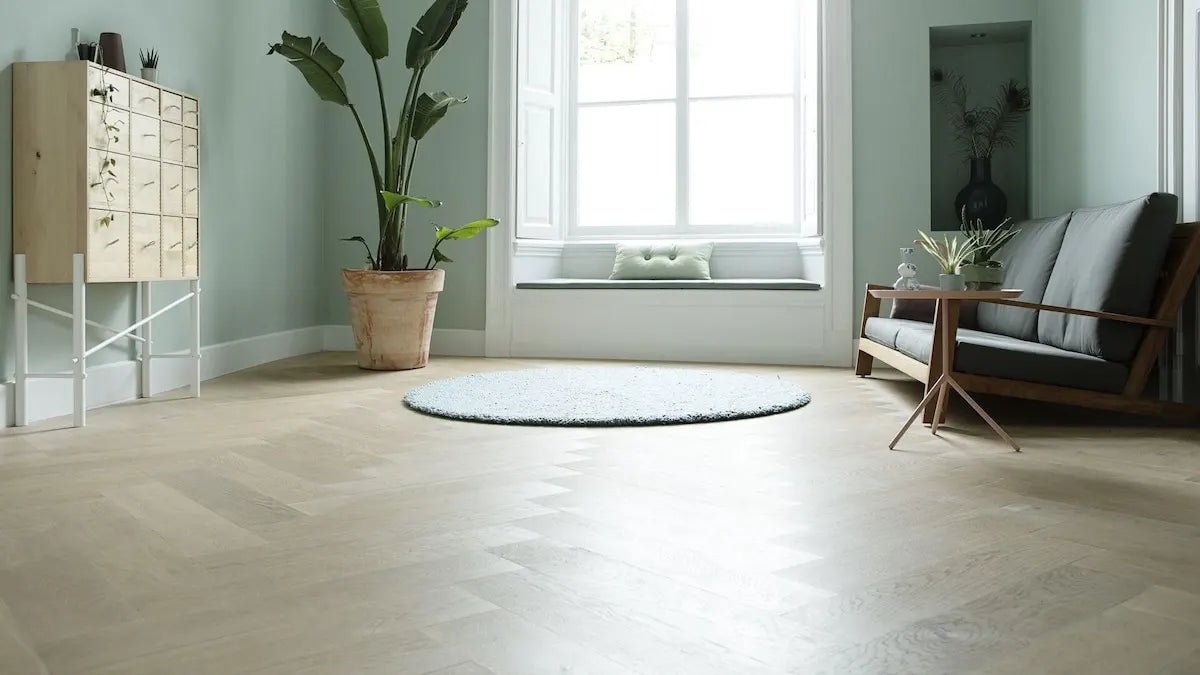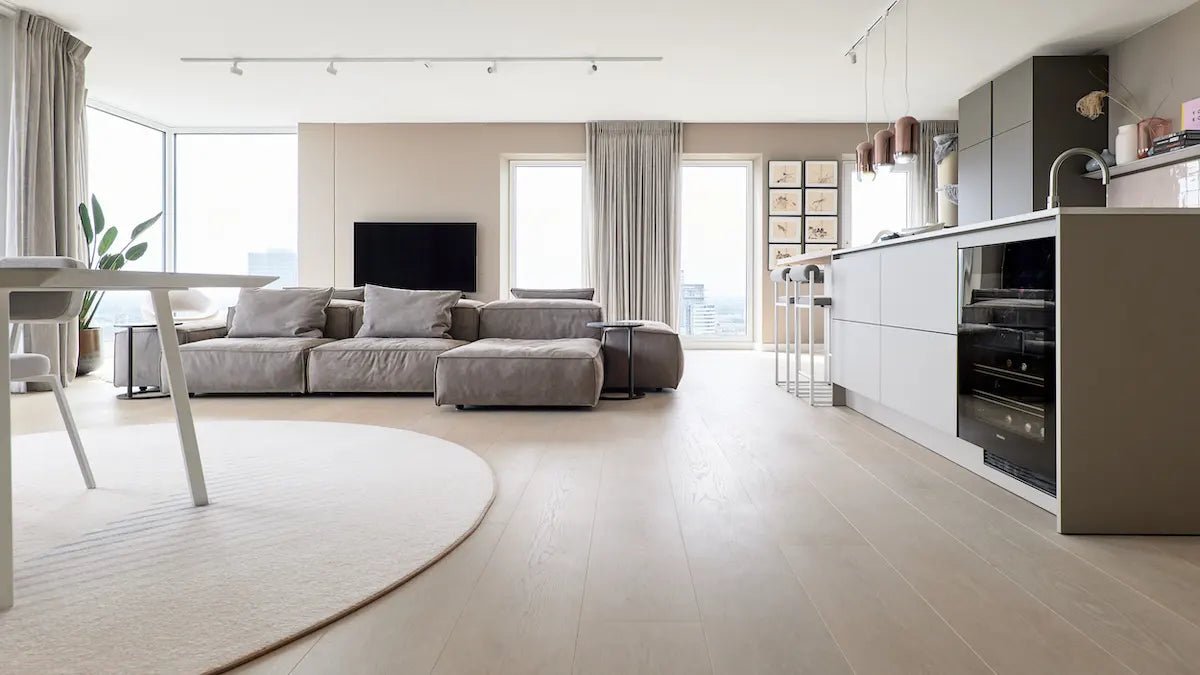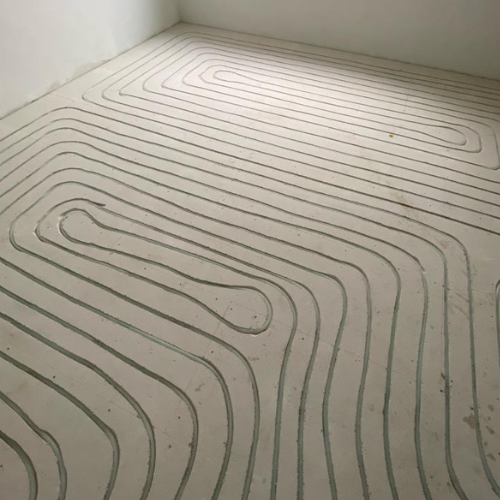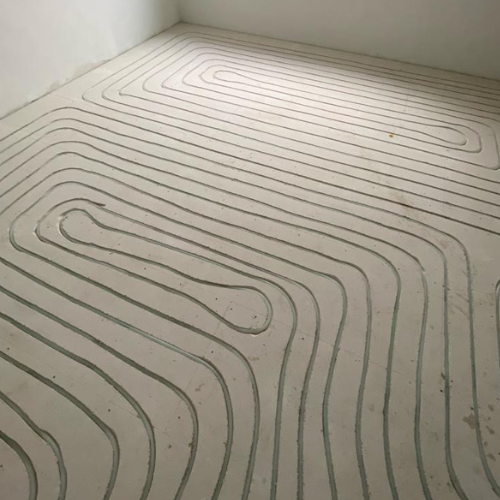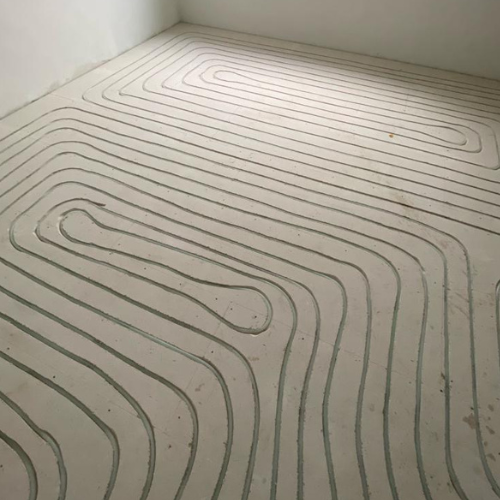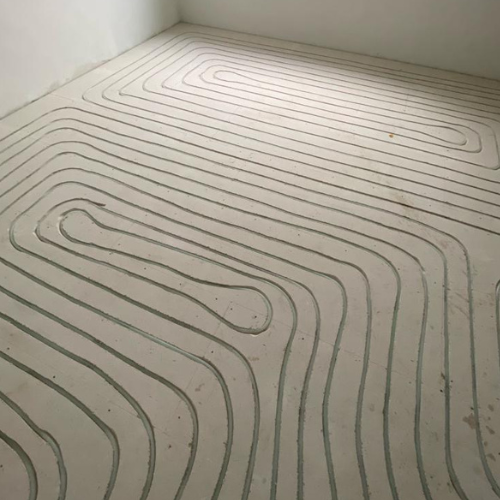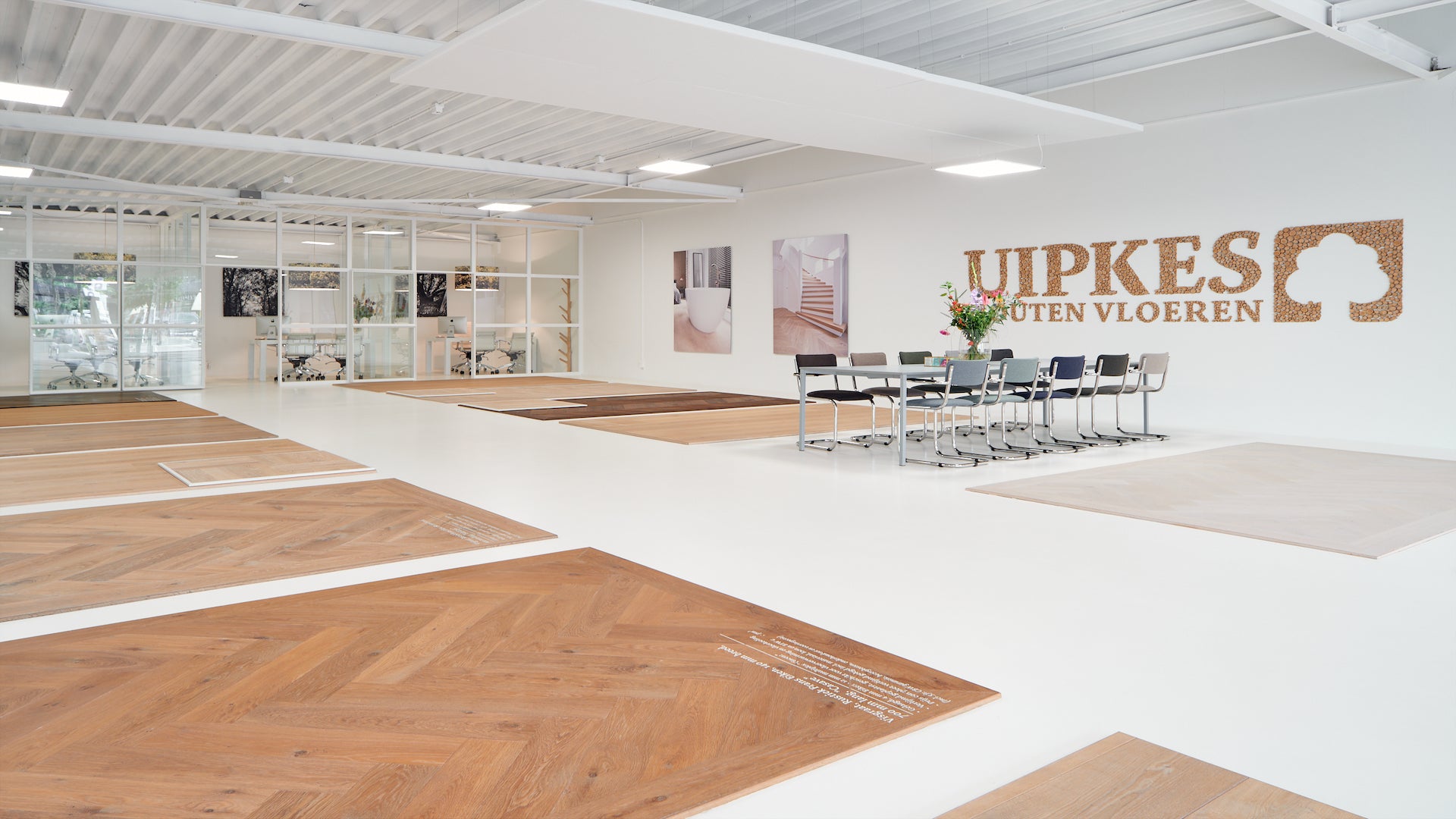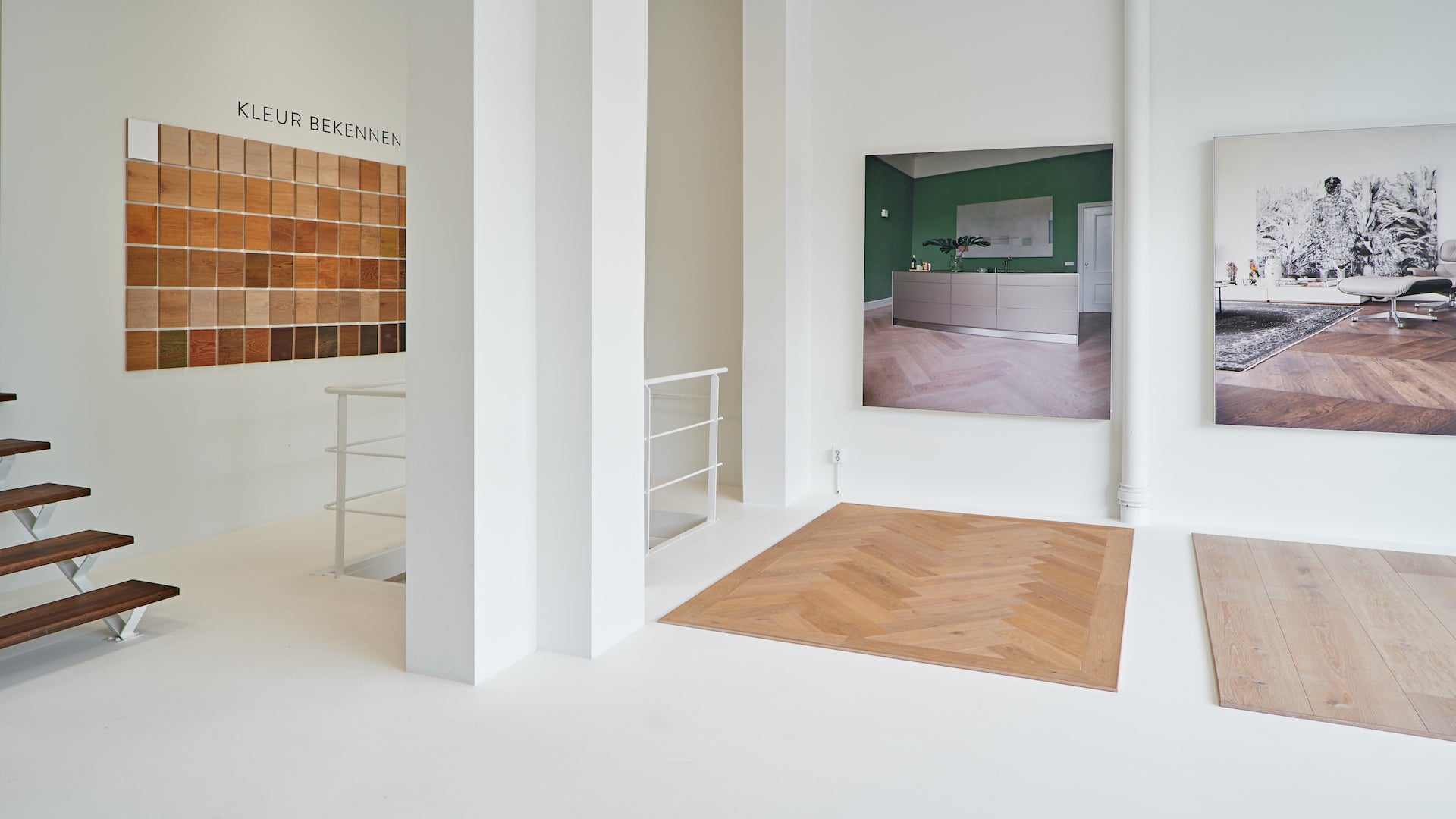Houten Vloer Op Vloerverwarming
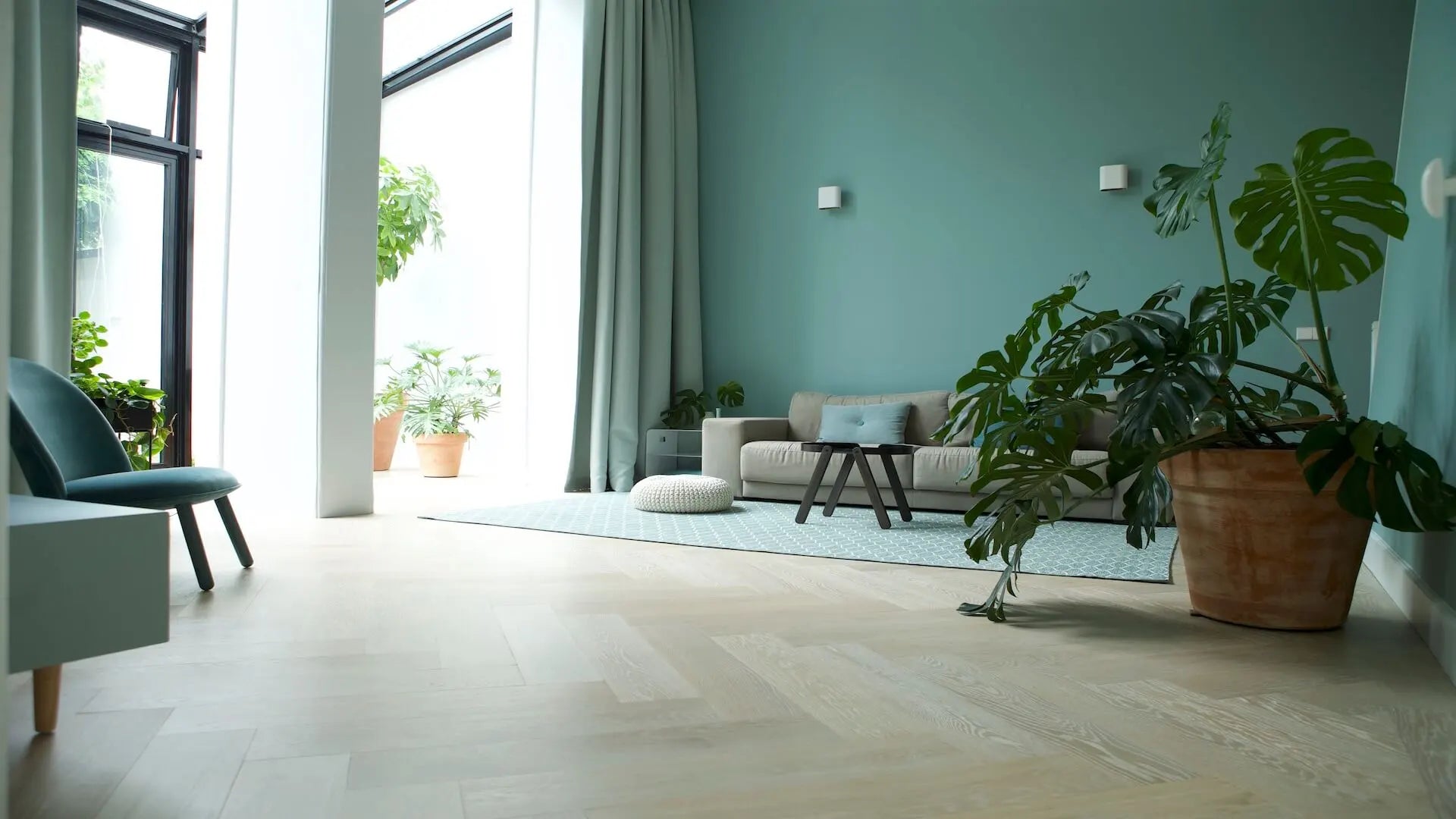
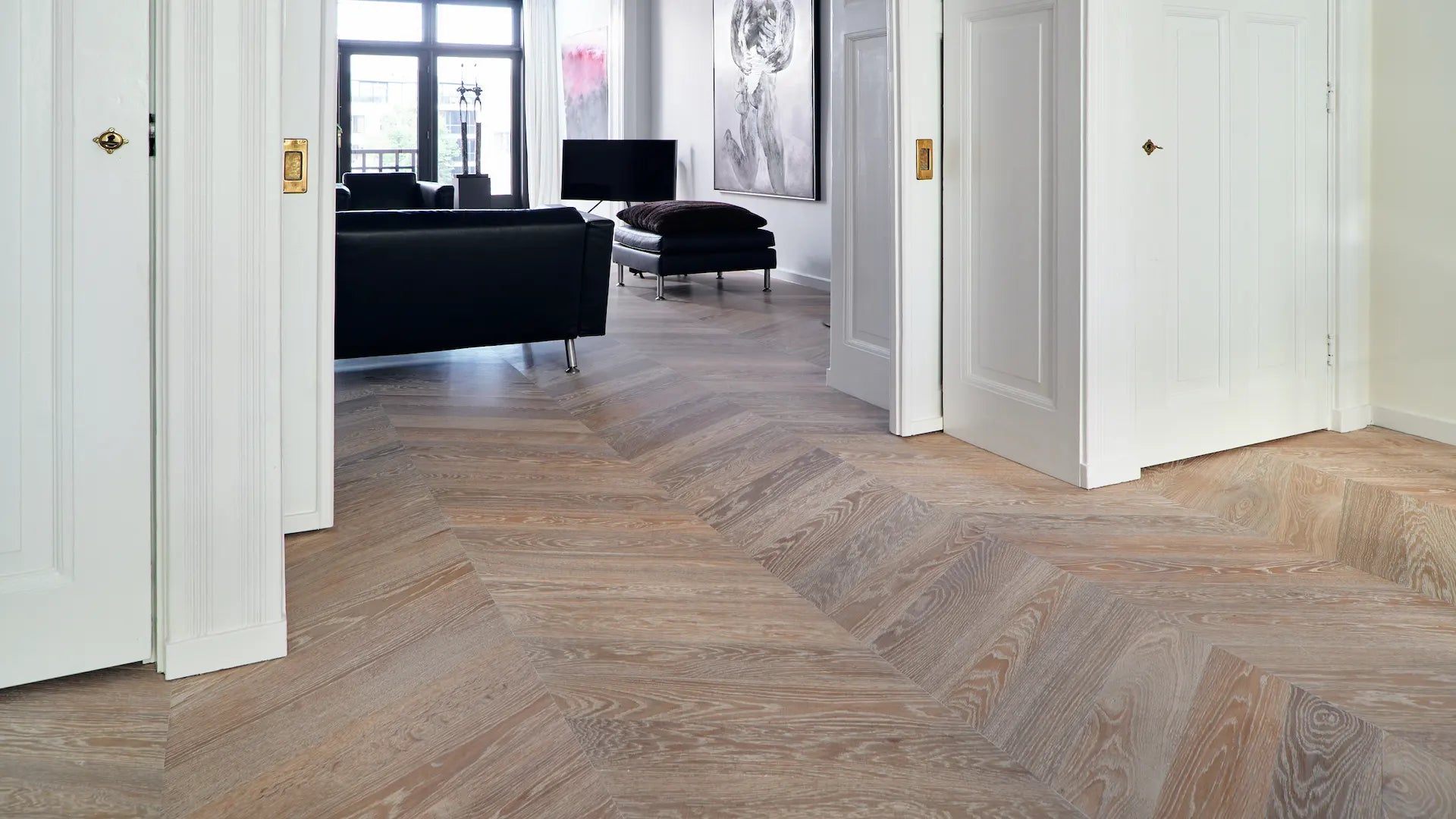
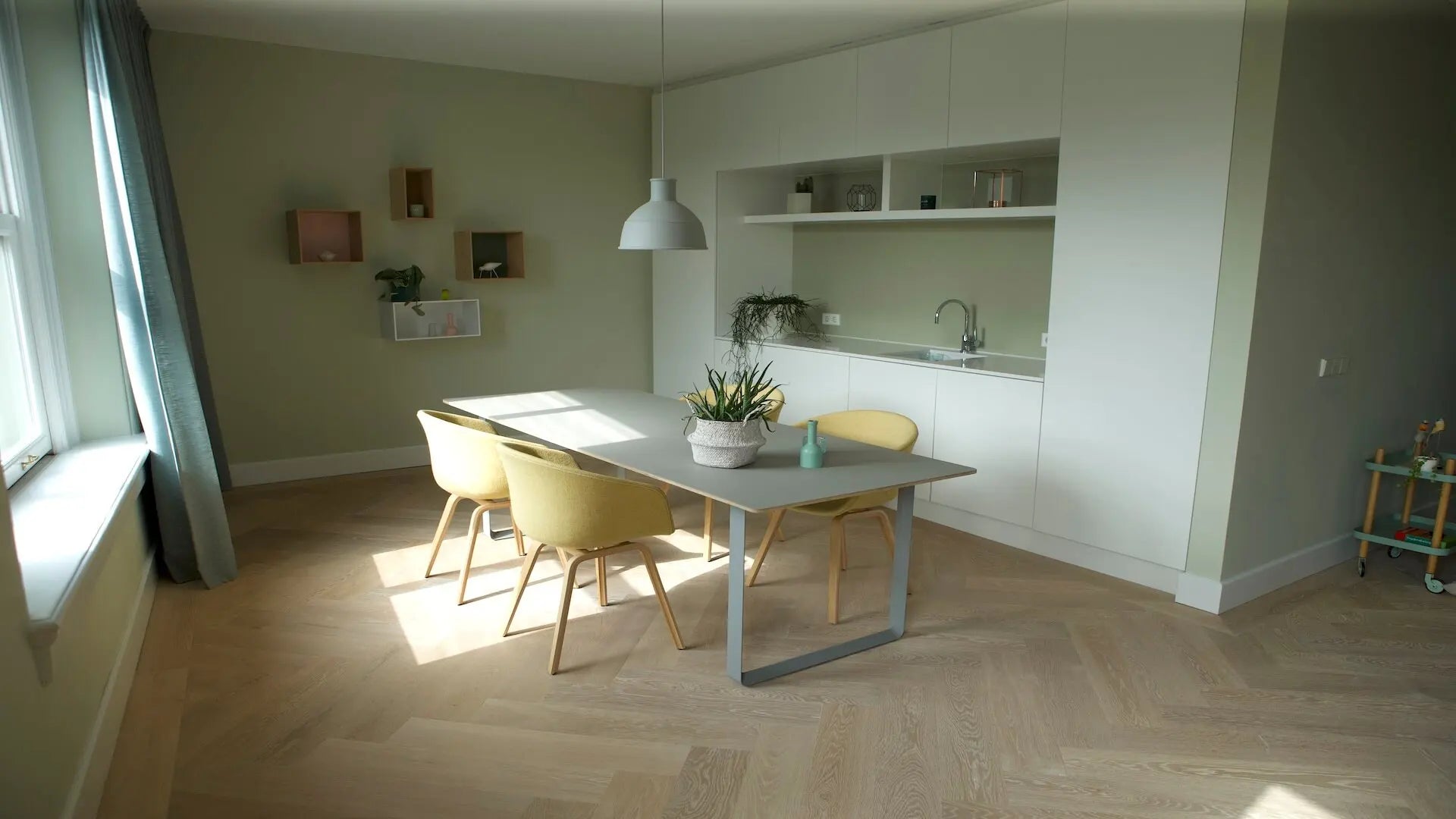
Bezoek de showroom
Wood and underfloor heating provide a warming experience
A wooden floor on underfloor heating has been a warm combination for years. Uipkes has been installing both underfloor heating and wooden floors since 2003! The planks are specially made to measure and are resistant to temperature changes. This means you can enjoy the comfort of warm wood for years to come.
Warmte En Stijl
Ervaar het comfort en design van onze houten vloeren op vloerverwarming. Geniet van een warme en sfeervolle omgeving. Wij leggen je graag uit hoe wij alles voor jou kunnen verzorgen om jou volledig te ontzorgen. Kom langs in de showroom voor een vrijblijvend adviesgesprek.
Alle Vloerverwarmings Werkzaamheden Onder Éen Dak
Bij Uipkes bieden we een ruime keuze aan houten vloeren in vele legpatronen, zoals visgraat of Hongaars punt vloeren. Ruim 20 jaar hebben we een uitgebreid assortiment kleuren en formaten beschikbaar. Onze betrokkenheid en toewijding gaat verder dan alleen producten leveren. Wij nemen de volledige verantwoordelijkheid voor jouw gehele project, vanaf de start.
Wij kunnen de oude, bestaande vloeren verwijderen of aanpassen, zoals het infrezen van vloerverwarming in een bestaande zandcementvloer, het plaatsen van gipsvezelplaten met ingefreesde vloerverwarming op een houten draagvloer, of een volledige installatie met matten vloerverwarming en een nieuwe zandcementdekvloer.
Wij regelen het allemaal voor jou.

We verzorgen het infrezen van de vloerverwarming, het dichtzetten en afwerken van de ondervloer en de installatie van het verdeelstation. Vervolgens gaan wij over tot het leggen van houten vloer. Hierdoor kun je genieten van goed werkende vloerverwarming in combinatie met een prachtige duurzame houten vloer. Al deze stappen worden zorgvuldig uitgevoerd door ons eigen ervaren team, en we streven naar een efficiënte en naadloze uitvoering van het gehele proces.
Met al onze ervaring begrijpen we dat je vragen hebt over de aanleg van vloerverwarming en een nieuwe vloer. Tijdens een bezoek aan onze showroom kunnen we samen jouw houten vloer, vloerverwarming, en alle andere werkzaamheden bespreken. Wanneer je zowel de houten vloer als vloerverwarming laat leggen door Uipkes, ontvang je een combinatiekorting.
In onze showroom kun je voorbeelden zien van eiken vloeren in de vorm van lamelparket in 90 kleuren en kun je persoonlijk advies krijgen over het combineren van houten vloeren met vloerverwarming in jouw woning. We delen onze kennis graag met jou en je krijgt na afloop altijd een maatwerk advies van ons toegestuurd via email. Kom langs en ontdek de mogelijkheden voor jouw project.
Ontvang maatwerk advies in onze showrooms
Products
-
Wooden floor on underfloor heating - 1 group
Regular price €1.486,00 EURRegular priceUnit price / per -
Wooden floor on underfloor heating - 2 groups
Regular price €1.786,00 EURRegular priceUnit price / per -
Wooden floor on underfloor heating - 3 groups
Regular price €2.365,00 EURRegular priceUnit price / per -
Wooden floor on underfloor heating - 4 groups
Regular price €2.867,00 EURRegular priceUnit price / per
Why a wooden floor on Underfloor heating ?
-
MOST SUSTAINABLE CHOICE
Wood, together with wool, is one of the renewable raw materials. Unlike, for example, PVC or tiled floors.
-
ULTIMATE COMFORT AND AESTHETICS
Nothing feels as pleasant and warming as warm wood under your bare feet, especially in the winter months. Without radiators, the room feels more spacious.
-
COST SAVING
By using underfloor heating you save an average of 10 -15% on your energy bill per year.
-
HEALTH
underfloor heating reduces dust accumulation in the room. In addition, it prevents mold formation due to low humidity.
Various Patterns
-
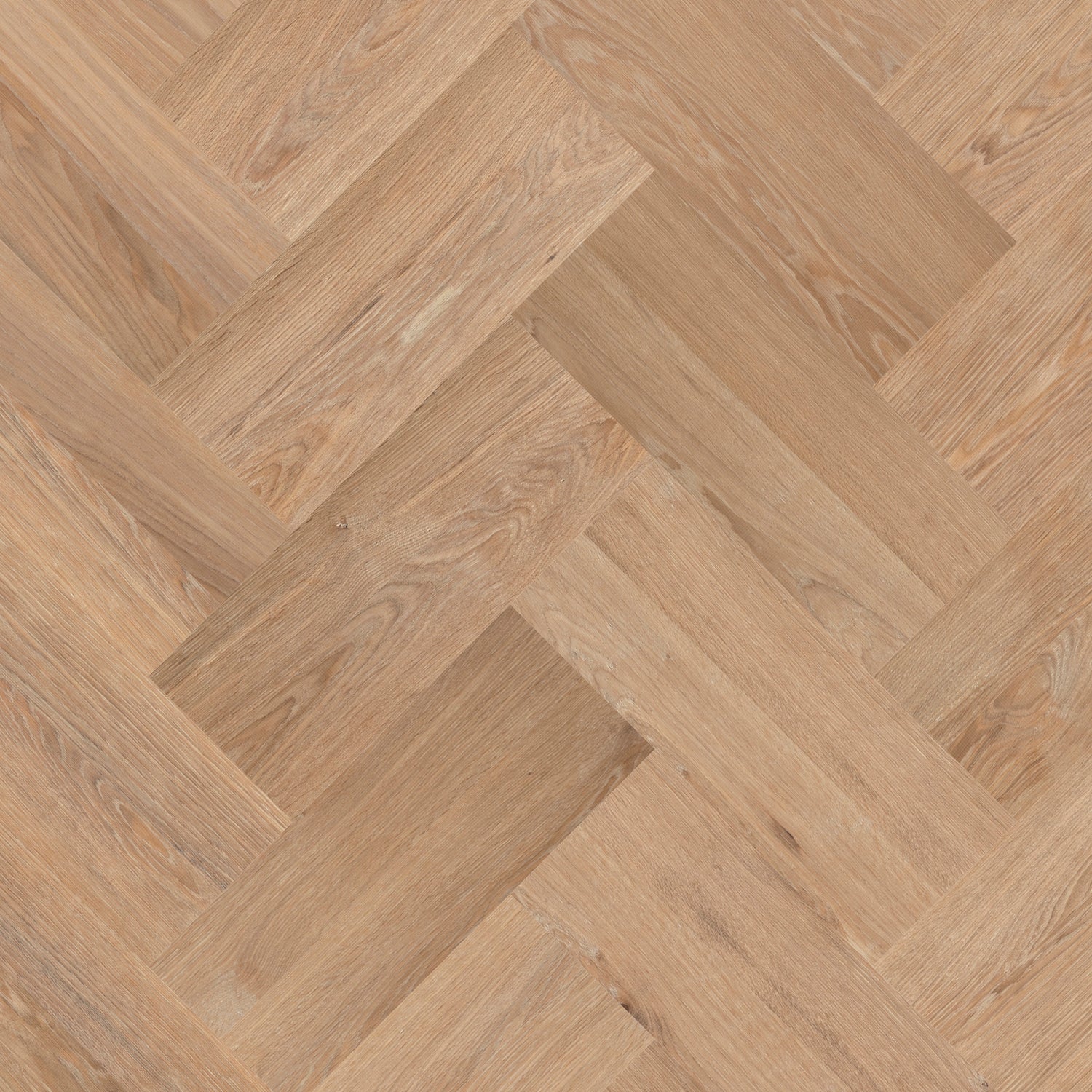
Double herringbone
With the double herringbone floor, the herringbone floor parts are placed next...
-
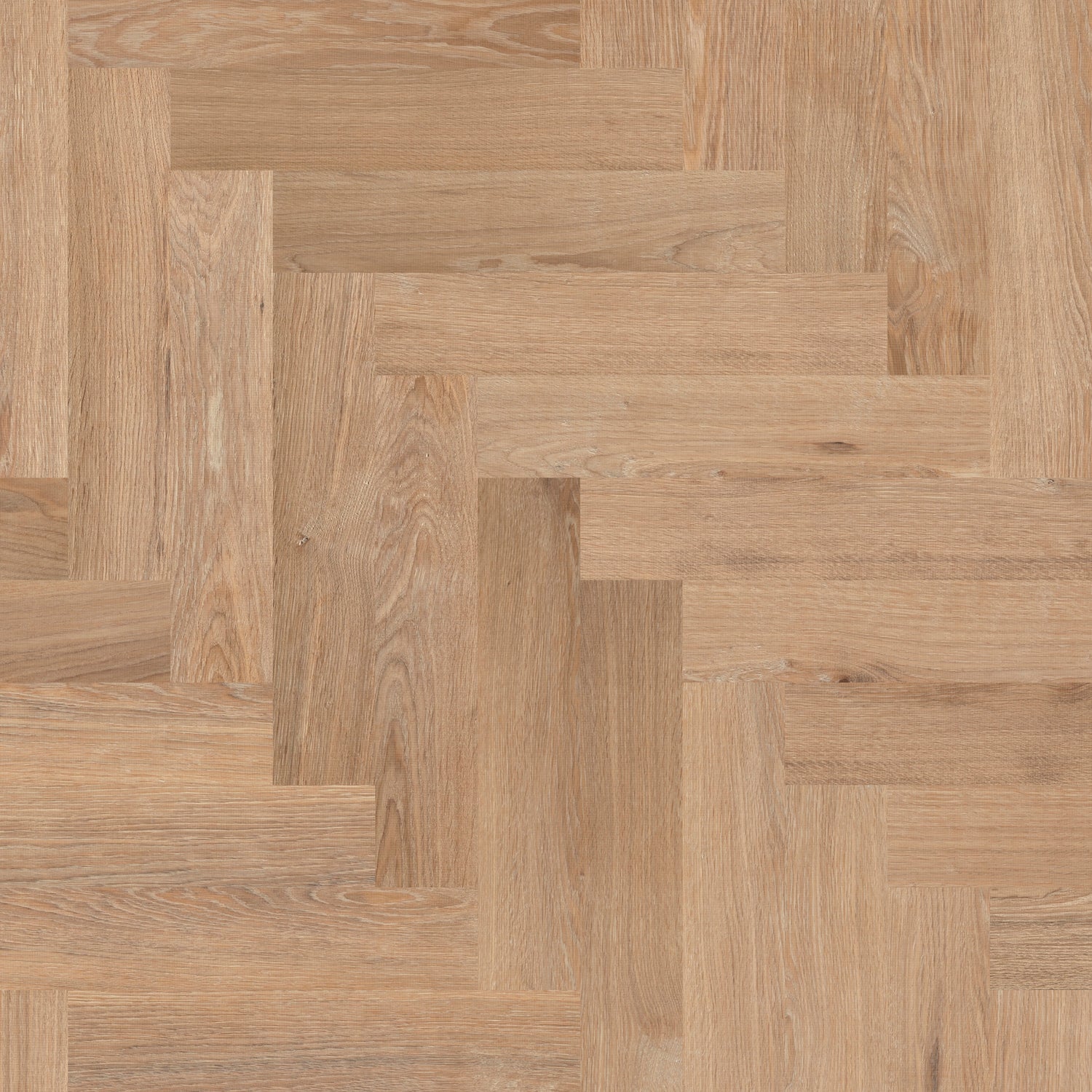
Elbow pattern
With the elbow pattern, the planks of the herringbone floor are turned...
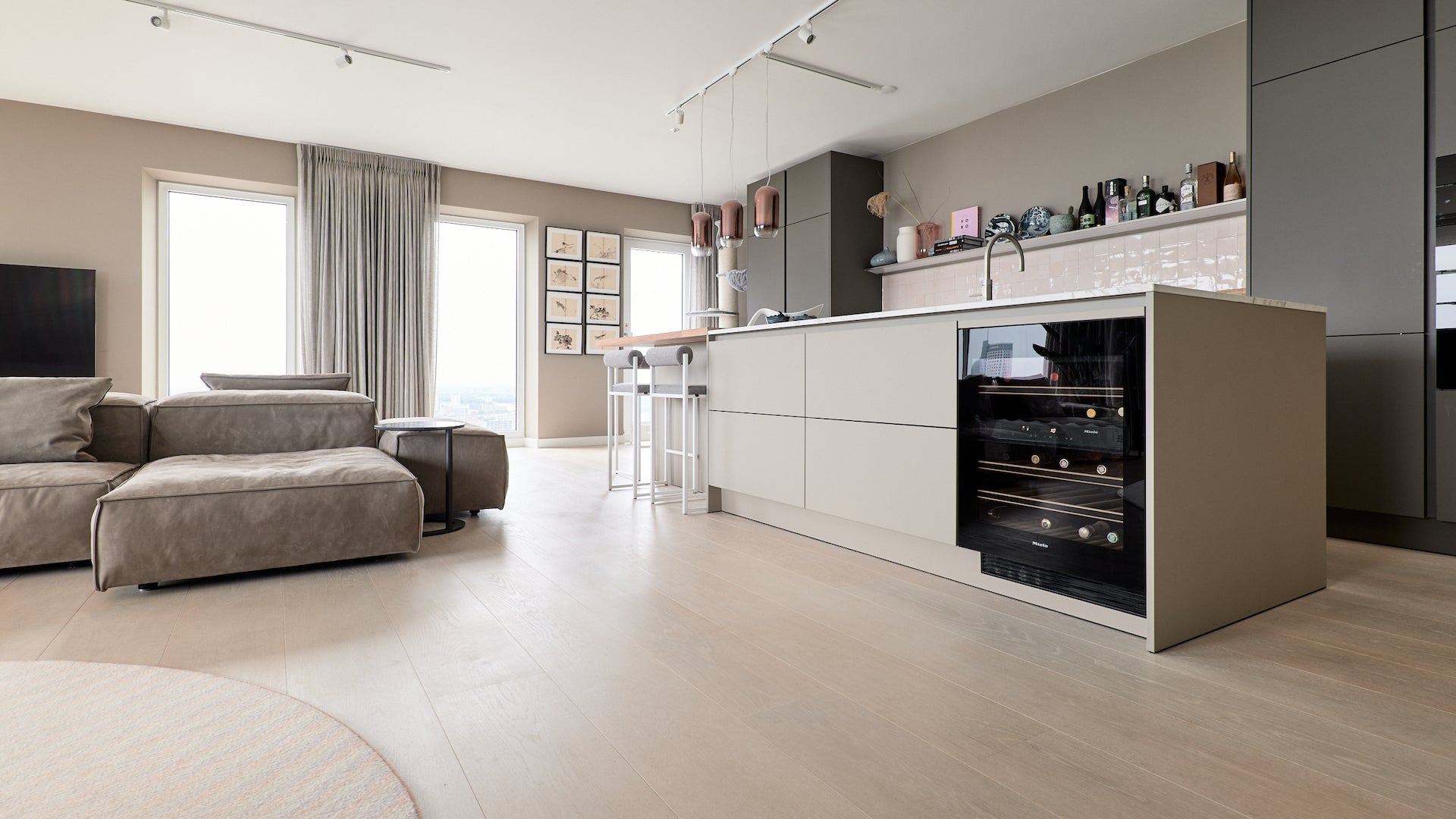
Types of underfloor heating
Read more about combining wooden floors with different types of heating systems. In addition, it is often possible to install a wooden floor over an existing floor with heating systems.
Milled Underfloor Underfloor heating
-
Milling underfloor heating 1 group up to 9 m2
Regular price €1.486,00 EURRegular priceUnit price / per -
Milling underfloor heating 2 groups up to 18 m2
Regular price €1.786,00 EURRegular priceUnit price / per -
Milling underfloor heating 3 groups up to 27 m2
Regular price €2.365,00 EURRegular priceUnit price / per -
Milling underfloor heating 4 groups up to 36 m2
Regular price €2.867,00 EURRegular priceUnit price / per
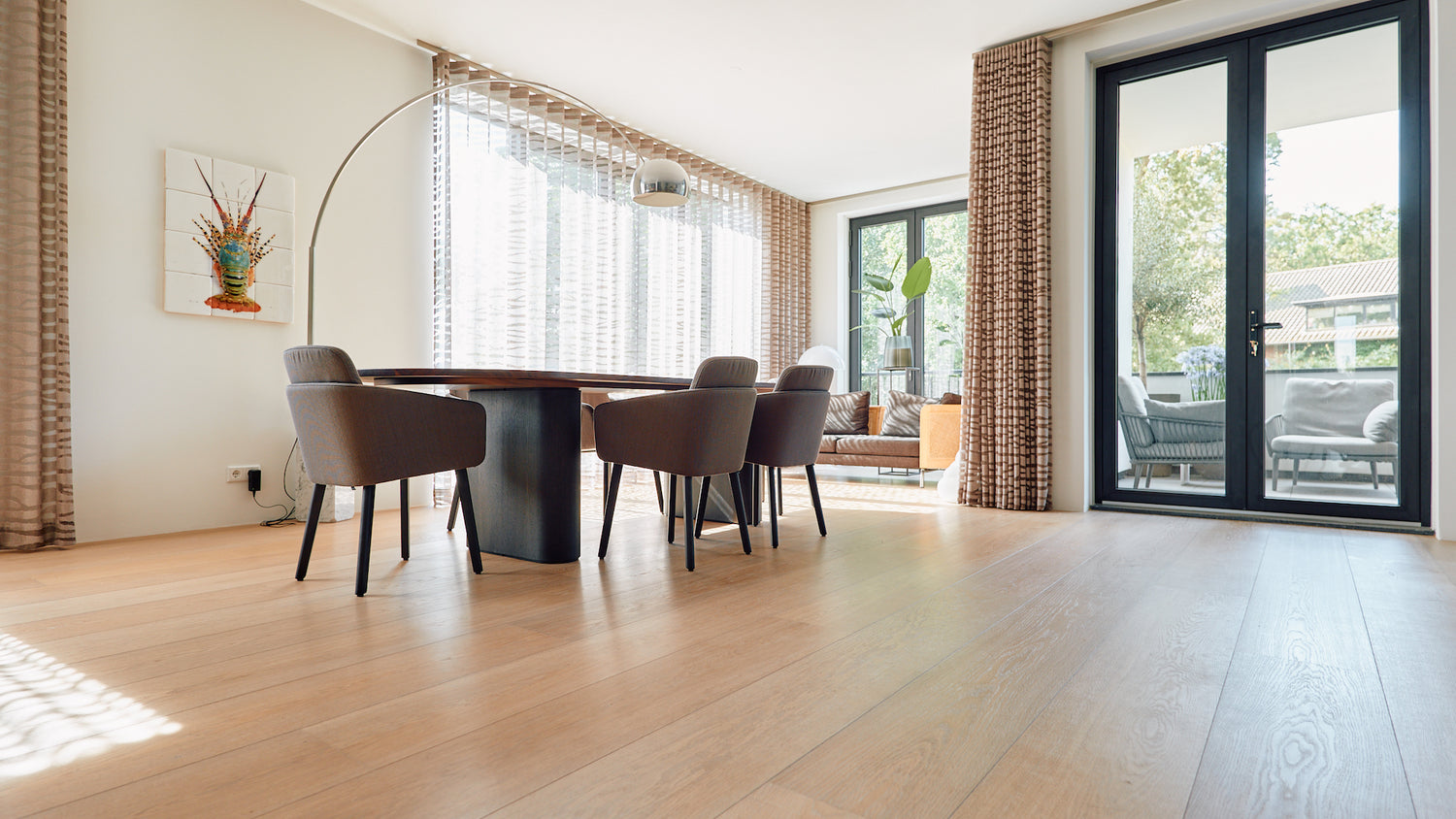
Would you like to have wooden floors and underfloor Underfloor heating installed?
In addition to installing real wooden floors, you can also have underfloor heating installed by our parquet technicians. The advantage of this is that we can relieve you of your worries, because there is one point of contact who supervises the entire process, the materials are well matched and all work is carried out by the same professionals. After installing the underfloor heating and carrying out the start-up protocol , we can immediately install the wooden floor, so that waiting times are minimal and you can enjoy your renovated home more quickly.
Wood flooring products
-
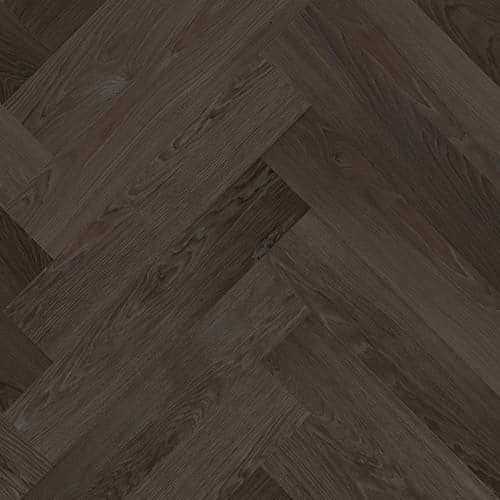
Herringbone floor Chalkboard Black - French Oak - 14x70 cm - €155,-
see product -
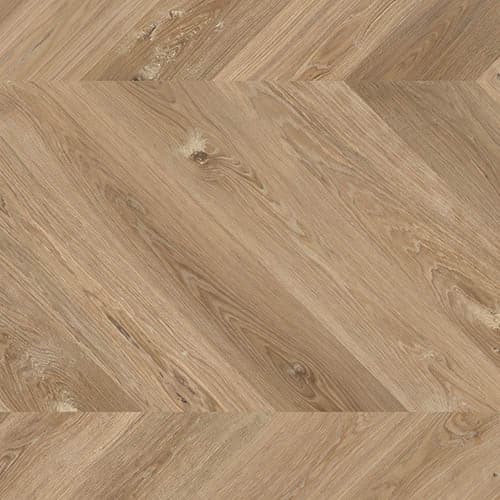
Chevron pattern floor Champagne - Rustic A - 18x90 cm - 45° - €158,-
see product -
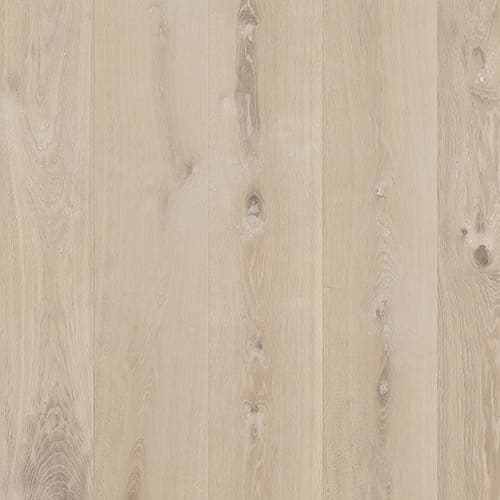
Wooden floor Coral White - Rustic French Oak - 22 CM - €116,-
see product -
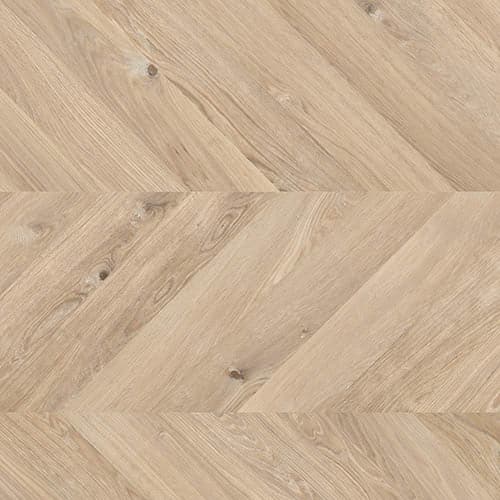
Chevron pattern floor Moss Grey - Rustic A - 45° - 12x60 cm - €134,-
see product -
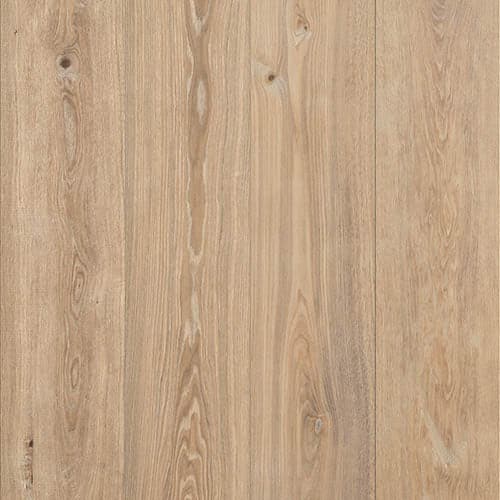
WOODEN FLOOR NOBLE GRAY - RUSTIC A - VINCENT - 24 CM - €133,-
see product -
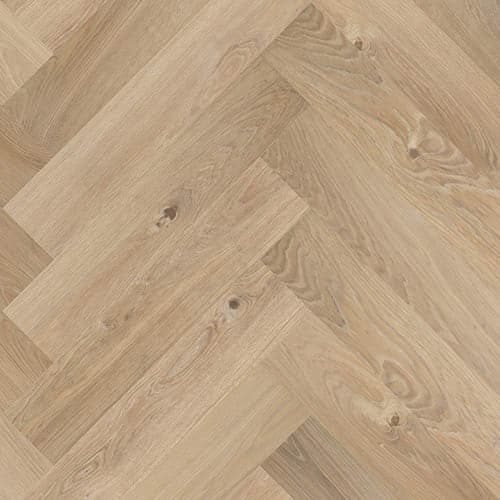
HERRINGBONE FLOOR FRESH WHITE - RUSTIC A - 14X70 CM - €134,-
see product
Houten Vloeren Op Vloerverwarming
Bekijk diverse vloeren in woningen gecombineerd met vloerverwarming.
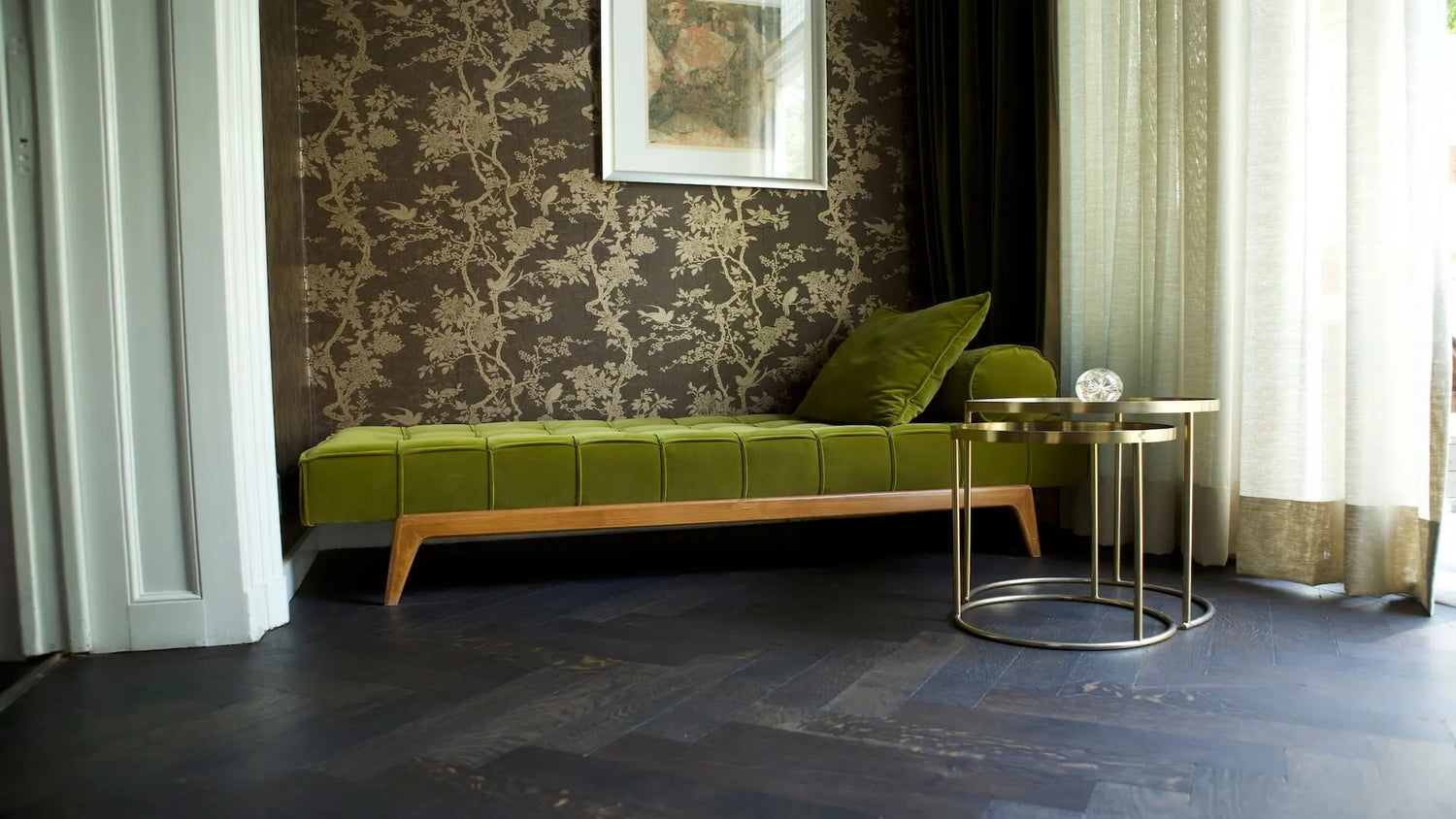
Mansion - Black chalkboard
In this beautifully restored mansion you will see a handmade, traditional oak herringbone floor with underfloor heating, finished in various shades of black, creating a classic atmosphere.
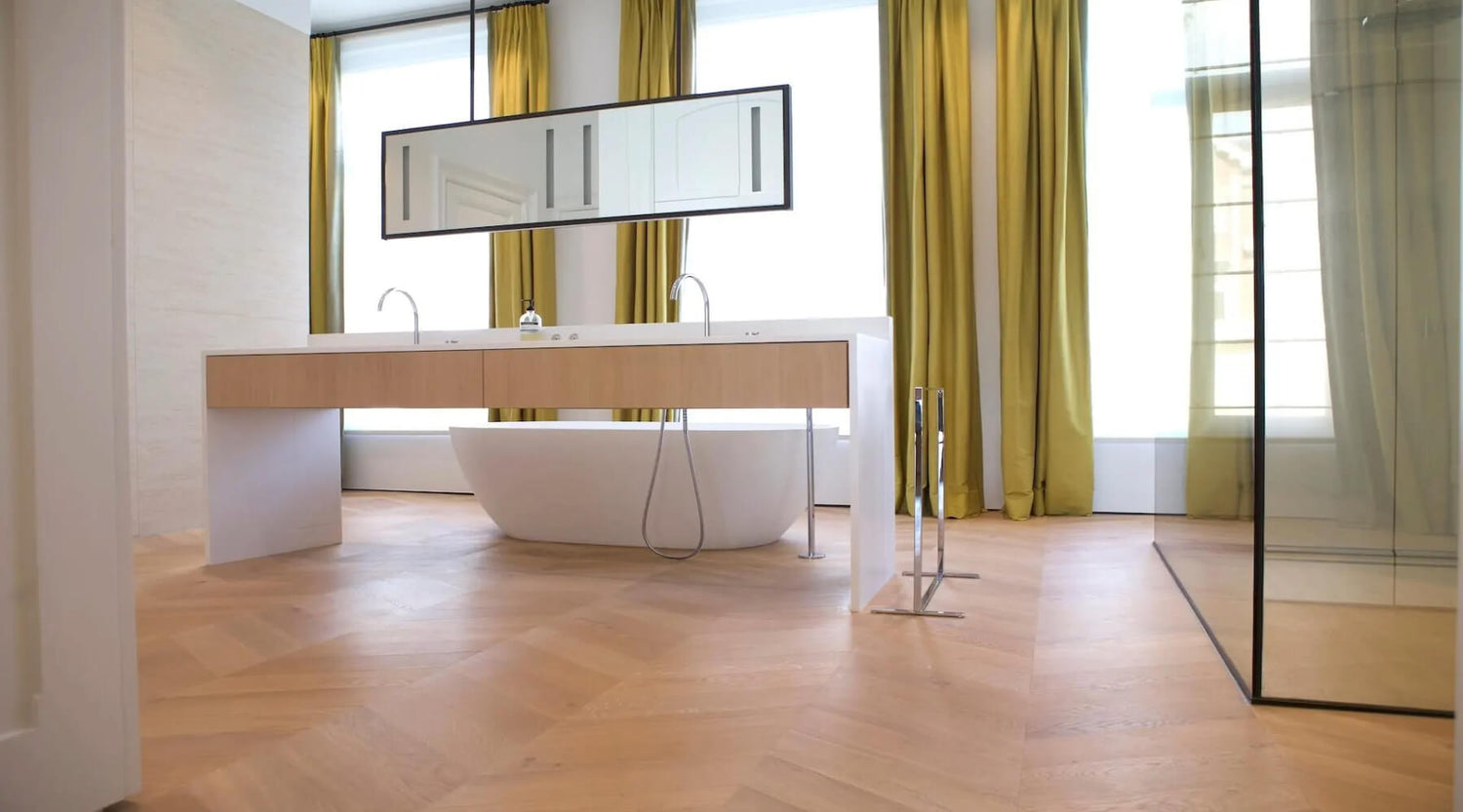
Bathroom - Champagne
In a beautifully renovated home, the Chevron floor connects the bedroom, dressing room and bathroom, while retaining the original charm.
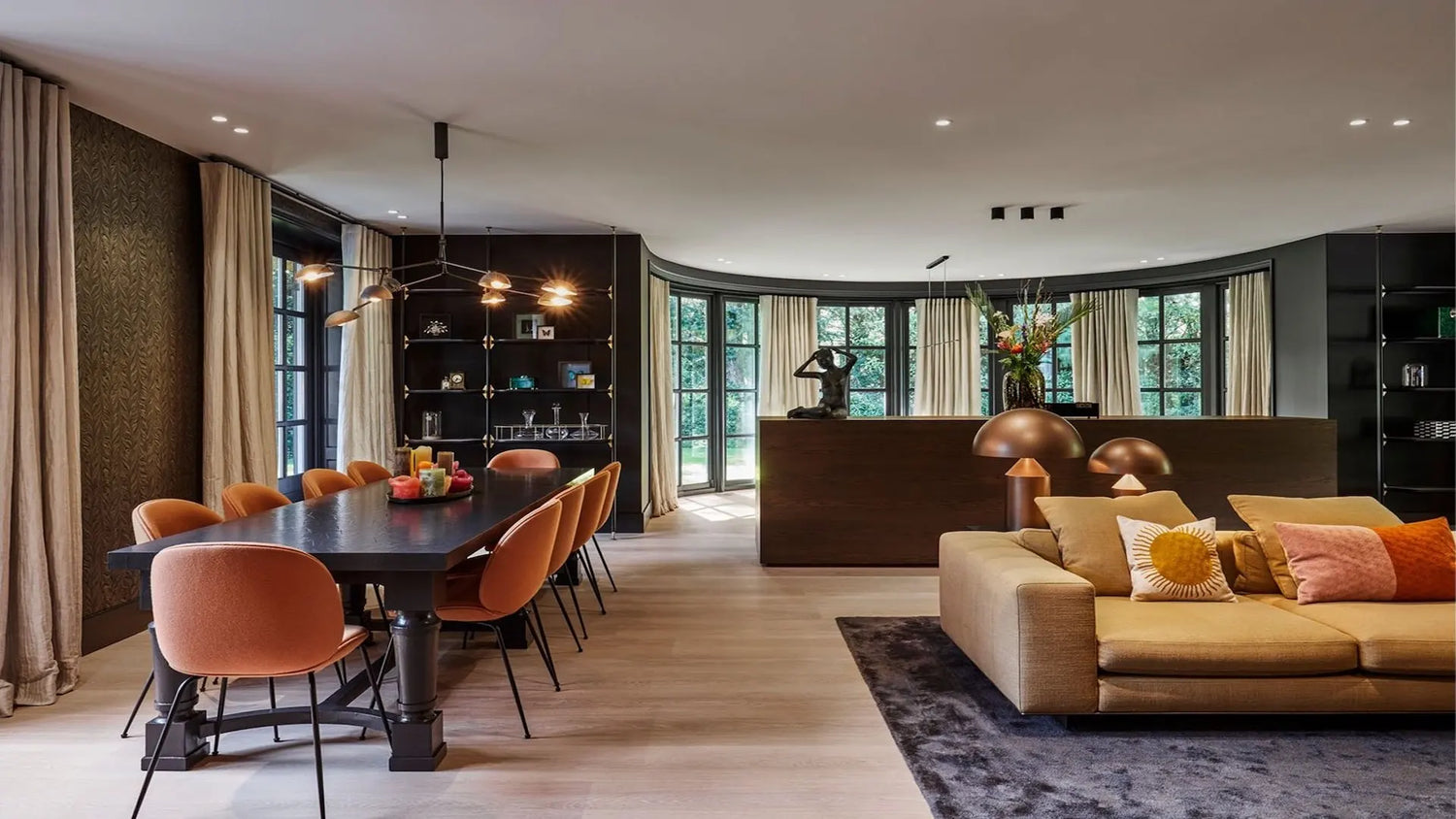
Villa - Coral White
A home designed in the 1990s, which has been carefully renovated to maintain its character and sustainability. You will find a wooden floor installed over underfloor heating , which connects different rooms.
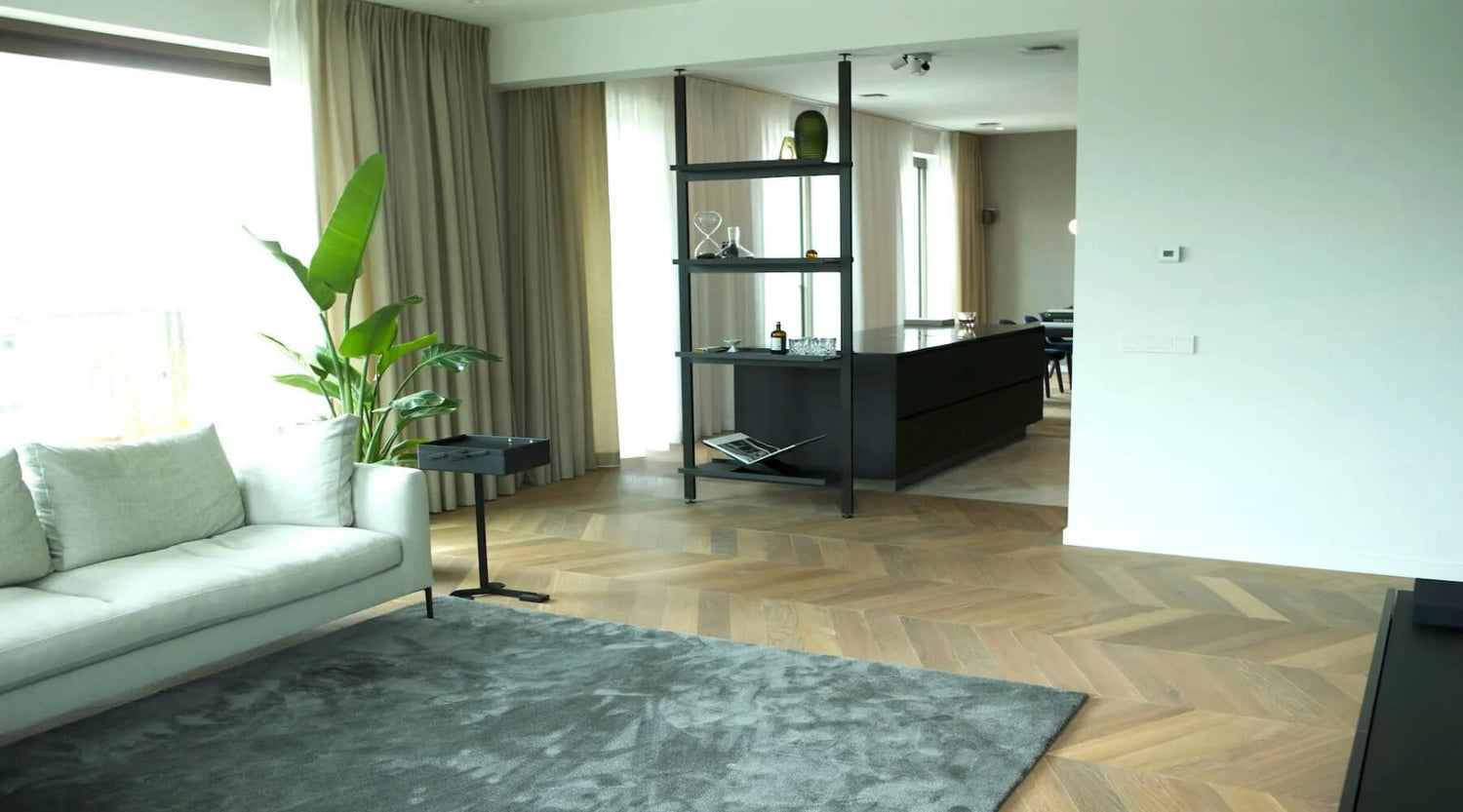
Newly built apartment - Moss Grey
Newly built apartment with underfloor heating and a grey chevron pattern floor that flows seamlessly into a marble floor in the same motif.
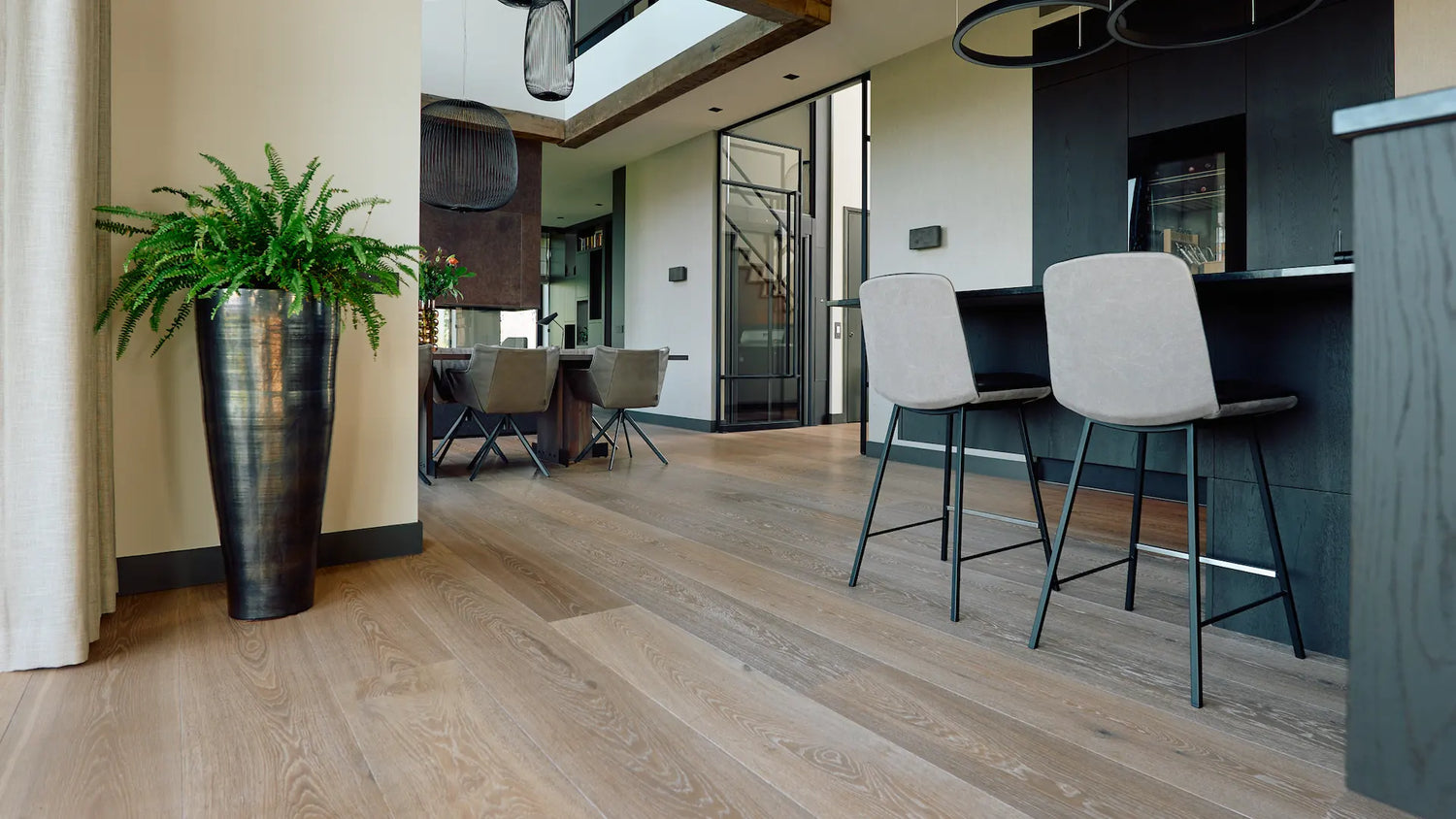
Modern - Noble Grey
In this rurally designed villa with attention to architecture, we have used generous planks that cross the entire house.
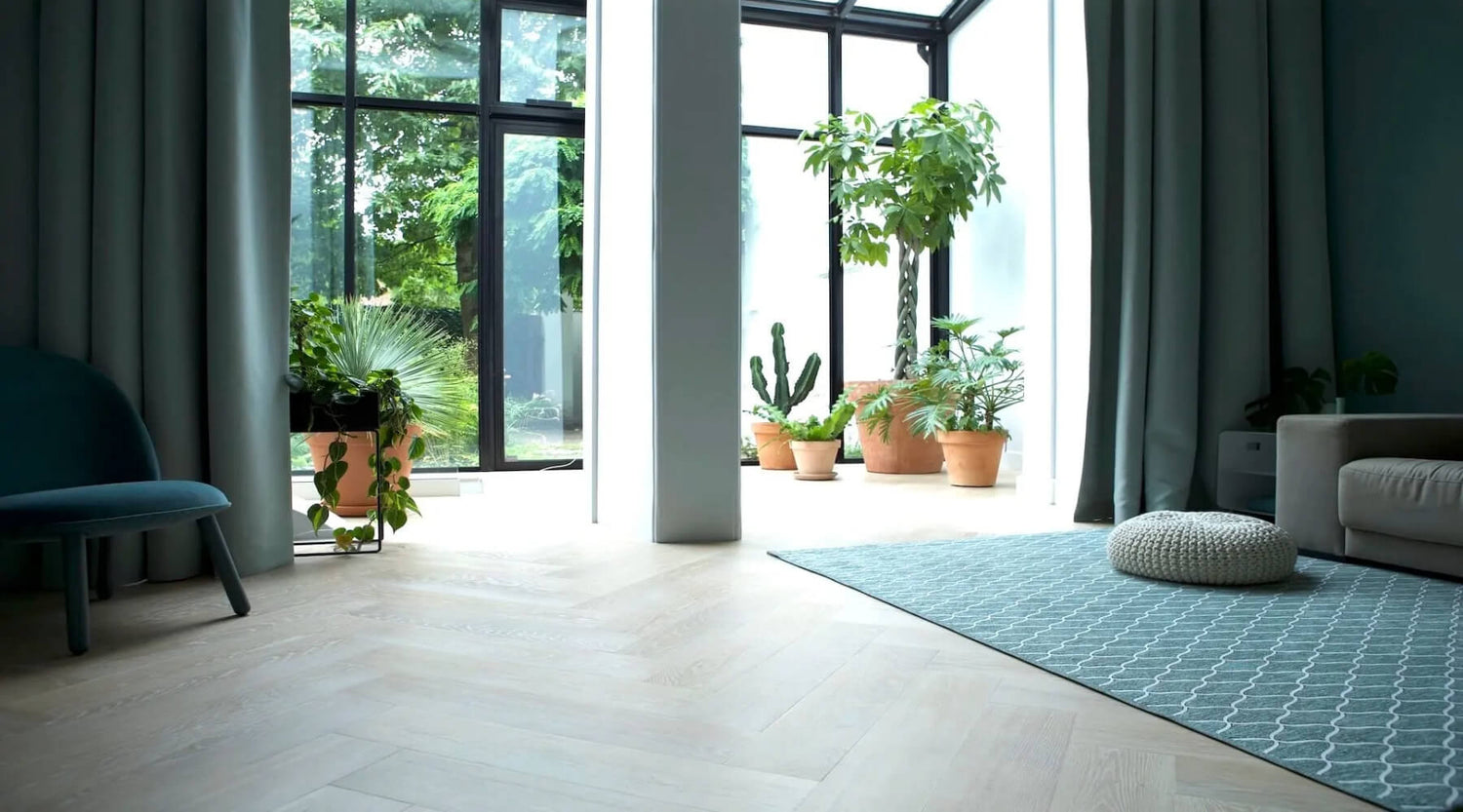
Historic building - Fresh White
In this partly modernized historic building we have opted for a spacious, light herringbone floor with underfloor heating .
Meer vloer inspiratie?
View more wooden floor colors
-
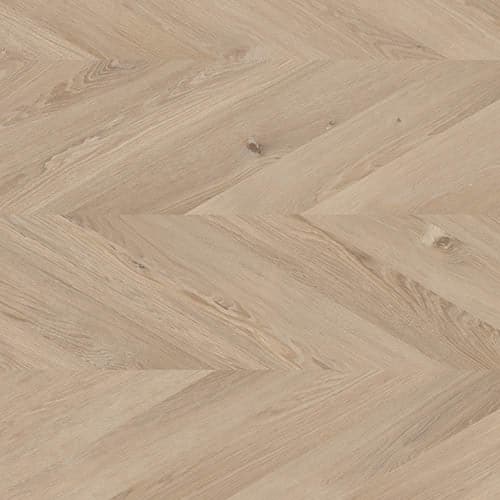
Chevron floor
view colors -
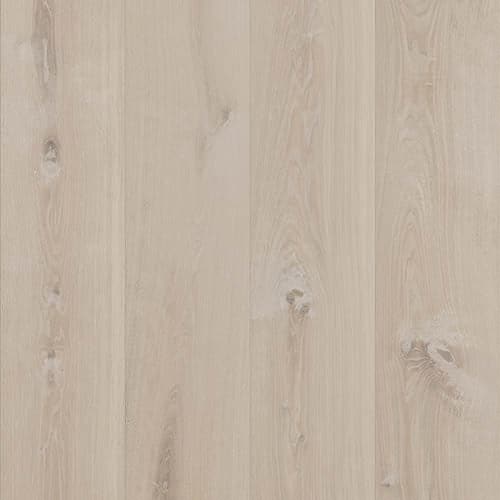
Wooden floor
view colors -
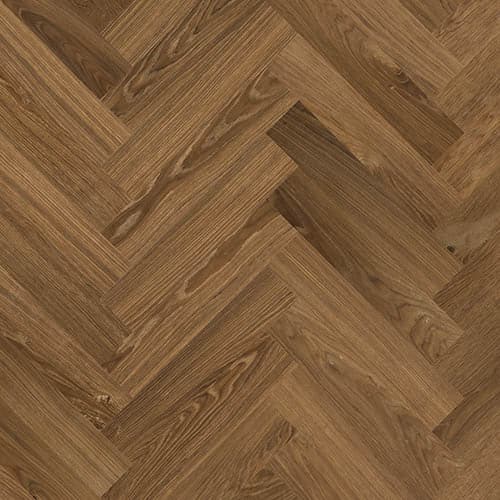
Herringbone floor
view colors
Suitable Heat Sources
Underfloor heating systems can use various heat sources, including heat pumps, central heating boilers, solar boilers, electric underfloor heating and biomass boilers. The choice depends on factors such as energy efficiency, costs and sustainability. Heat pumps are an environmentally friendly and efficient option, while electric underfloor heating can be suitable for smaller spaces.
View all heat sources
Experiences Wooden Floor With Underfloor heating
-
Mrs. Kwist from The Hague
" Underfloor heating and a wooden floor turned out to be possible..."
-
Schneider family from Rotterdam
"Thanks to their good advice, we have a very beautiful, special oak floor..."
-
Van den Toorn family from Rotterdam
"About 15 years ago we bought our first wooden floor at Uipkes..."
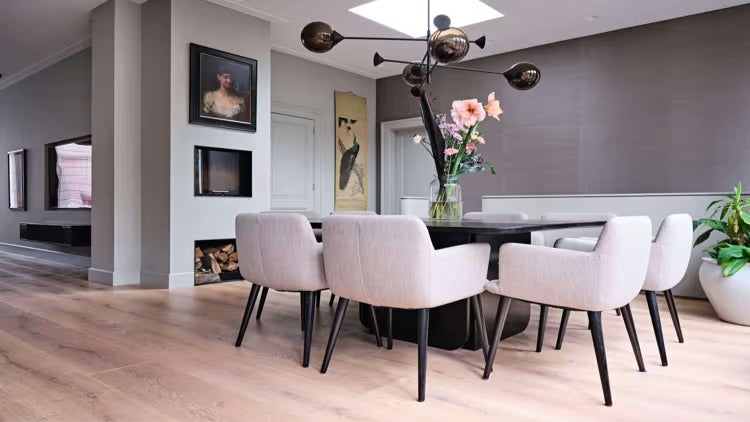
Suitable Subfloors
You can install underfloor heating for wooden floors on or in various subfloors:
- Sand cement screed
- Anhydrite floor
- Wooden subfloor
- Tiled floor
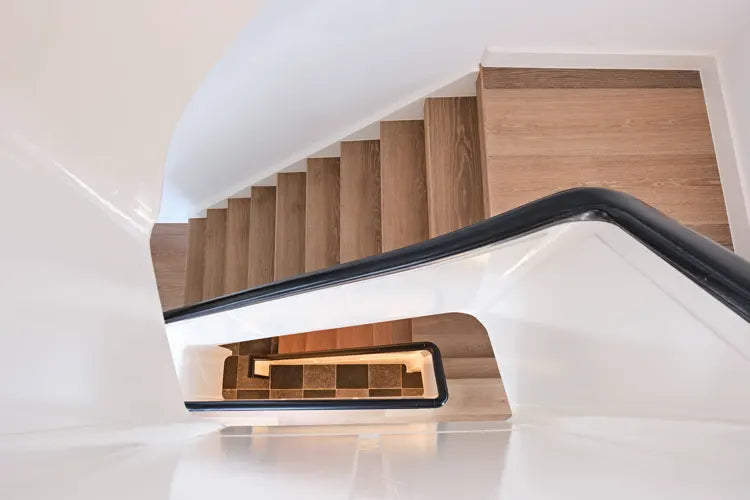
Frequently Asked Questions
Is it possible to combine underfloor heating and a wooden floor?
Certainly! You can install wooden floors on underfloor heating . We have years of experience with this. In addition to the wooden floor, we can also install underfloor heating for you.
If you have a newly poured floor, you must carry out the heating protocol once so that the remaining moisture is removed from the floor. In the weeks before we place the wooden floor, we carry out an inspection to check whether the subfloor is dry enough.
This gives us enough time, if necessary, to take measures before installing the wooden floor. After we have installed the wooden floor, you can increase the temperature gradually (2 degrees per day).
Our wooden floors are suitable for various types underfloor heating , including: dry construction systems, milled floors, systems in combination with a heat pump, district heating or infrared heating. It does not matter whether you use underfloor heating as main heating or as additional heating.
What advantages does underfloor heating offer in combination with a wooden floor?
Underfloor heating under a wooden floor offers ultimate living comfort and even heat distribution in the room. Removing radiators gives the room an aesthetic advantage and more freedom in design.
Perhaps something you don't immediately think of, but underfloor heating is a solution for people who are sensitive to dust and/or have vulnerable lungs and allergies. A wooden floor that has been installed on underfloor heating can be easily maintained by vacuuming and mopping it. Dust cannot easily accumulate, which is the case with radiators that are difficult to clean. The chance of mold forming in the home is also a lot smaller, because underfloor heating ensures lower humidity in the home. Mold needs high humidity to grow.Underfloor heating can also contribute to cost savings and sustainability, because it entails lower heating costs and can be well combined with sustainable energy sources .
Does the combination underfloor heating and wooden floors result in lower energy costs compared to radiators?
Yes, about 15-20% less gas consumption.
Overall, this combination can lead to lower energy costs compared to radiators. This is because underfloor heating spreads the heat more evenly and retains the heat in the room for longer. This allows you to set the thermostat lower and still maintain a comfortable temperature, resulting in energy savings.
In addition, underfloor heating has a lower operating temperature than radiators, which is more efficient at heating the space. It is important to know that energy savings depend on several factors, such as insulation, outside temperature and the use of thermostatic controls. It is advisable to seek advice from a specialist to get an accurate estimate of the potential energy savings.
Can Uipkes take care of the underfloor heating and wooden floor for us?
Yes, Uipkes wooden floors takes care of both the installation of underfloor heating and the installation of the wooden floor itself. Uipkes employs its own employees and has all the necessary equipment to install underfloor heating , including milling and connecting it. If desired, the floor can be installed immediately afterwards, without waiting times or dependence on external parties.
How long does it take to install underfloor heating and the wooden floor?
As an indication, you can take approximately 4 to 7 days into account for a surface of 50 m2. You can maintain the following schedule:
Removing and disposing of the existing floor, installing the Fermacell / Estrich / Knauf / Plasterboard subfloor and edges: approximately 1 day.
Milling the underfloor heating , installing the pipes, hanging the distribution station, connecting the pipes to the distribution station and lubricating the pipes: approximately 1 day. (if all other preparatory work has been carried out).
Going through the start-up protocol: 10-14 days
Installing a new wooden floor, including color finish: approx. 3 days.
Drying of the color treatment: approx. 2 days.
How does installing a wooden floor over underfloor heating work in practice?
Underfloor heating is generally used because a lower water temperature is required than with traditional radiators. The amount of energy required to make water increasingly warmer is increasing disproportionately.
That is why all new-build houses in the Netherlands are equipped with underfloor heating: you need much less energy to heat the home. The thermostat is set to a fixed temperature and remains that way until it gets warmer again in the spring.
With newly installed underfloor heating you can also have zones installed, for example the bathroom 24 degrees, the bedroom 14 degrees and the living room 21 degrees Celsius in the summer you can reverse this when there is so-called underfloor cooling.
The thermostat has no function during this period and will no longer heat the underfloor heating . In the autumn this is exactly the other way around, when the temperature slowly becomes colder, the thermostat will slowly start heating again.
We live in a mild maritime climate without huge temperature fluctuations, making constant underfloor heating a cost-saving and environmentally friendly solution.
What should I take into account when using and maintaining a wooden floor placed on underfloor heating ?
A wooden floor must be heated and cooled gradually to prevent shrinking and expanding of the wood. This happens naturally during the seasonal changes.
After completing your beautiful wooden floor, we will give you a hygrometer as a gift. This allows you to measure the humidity in the home. Place the hygrometer at eye level on an interior wall, out of the sun and free from draughts. This way you can clearly see whether the humidity percentage remains stable.
During a period of frost, the humidity percentage can drop below 40%. If this remains the case for more than a few days, you can increase the percentage with a humidifier to prevent the floorboards from shrinking. If natural shrinkage occurs, the floor will expand again in the spring.
To ensure that your wooden floor remains beautiful for decades, it is good to dust, vacuum and mop the floor regularly. We supply the floor with resources to perfectly maintain your wooden floor, so that you can extend its lifespan.
Which wooden floors are suitable for combination with underfloor heating ?
All Uipkes wooden floors are suitable for underfloor heating . Since 2003, we have been using plank floors, herringbone floors and chevron pattern floors for underfloor heating , both in small and large spaces.
The most commonly used product is Vincent (Rc 0.088 kW per m2). Vincent floorboards are available in widths of up to 28 cm and suitable for use in the plank pattern, herringbone pattern and the chevron pattern.
We also have the product 'Floortje'. Floortje is a plank floor with a lower thermal resistance than Vincent (Rc 0.070 kW per m2). The floorboards are available up to a width of 24 cm.
As far as the wood specie is concerned, oak is the most commonly used wood specie for underfloor heating . That is why at Uipkes we mainly work with oak floors.
We have a lot of experience in large projects for corporate customers with an extensive program of requirements. We work in the same way for private individuals, using the same quality preparation, wood products and experienced floor layers who have been installing our wooden floors on underfloor heating for decades.
Can a wooden floor and underfloor heating be installed in every room?
Although a wooden floor with underfloor heating can be installed in most rooms, there are some exceptions. For example, it is not recommended to place the combination in damp areas such as bathrooms or saunas, where the risk of moisture damage is greater.
It is always advisable to follow the recommendations of the manufacturer and a professional installer when choosing underfloor heating for a wooden floor.
What about the 'effect of wood'?
The effect of a Uipkes wooden floor is minimal. This is partly because the wood is dried before it is used for underfloor heating . The wood is then glued to waterproof sheet material, which is made up of cross-glued parts that are glued to the subfloor with glue.
The possible effect of the wood is therefore hardly visible. The effect is there, but it is so minimal that you can even install the wooden floor against the wall without skirting boards and without any space in between.
Which installation patterns can you apply to underfloor heating ?
In addition to the traditional plank installation pattern , you can also easily apply a chevron floor or herringbone floor to underfloor heating . Uipkes Wood Flooring can apply a total of 17 patterns to underfloor heating .
Which finish is most suitable for a wooden floor with underfloor heating ?
When you combine a wooden floor with underfloor heating , certain finishes are more suitable than others. Examples of finishes are lacquer, hard wax oil and oil. It is generally recommended to opt for an oil-based finish. These finishes transmit heat well and are flexible enough to accommodate the natural movement of the wood.
What does the efficiency of underfloor heating depend on?
This depends on the wood specie and in particular the hardness, resistance and stability of the wood. The thickness of the wooden floor (12, 16 or 21 mm) also plays a role.
Uipkes floors are available in the following thicknesses:
- 'Floortje': 9 mm waterproof glued birch plywood with 3 mm oak wood. Rc 0.070 kW per m2.
- 'Vincent': 12 mm plus 4 mm oak wood. Rc 0.088 kW per m2.
- 'Robin': 15 mm plus 6 mm oak wood. Rc 0.12 kW per m2.
In addition to the thickness of the floor, there are other factors that influence the efficiency of underfloor heating . For example, the insulation of the home, the type of underfloor heating installation, the distance of the pipes and whether you choose underfloor heating as main or additional heating also influence the efficiency.
To keep the heat from the underfloor heating indoors, a good energy label is important (at least label B). New-build homes have at least energy label A and are very suitable for underfloor heating .
Existing homes often require adjustments to achieve energy label B.
What is the maximum surface temperature of the screed?
With underfloor heating under a wooden floor, the maximum surface temperature of the screed must not exceed 29°C. The wood itself may not get warmer than 25°C to prevent possible damage.
What is the importance of the start-up protocol for underfloor heating under a wooden floor?
The start-up protocol is important before a wooden floor can be installed. The protocol ensures that the screed 'settles' and no longer has any influence on the bonding of the floor. In addition, the protocol helps evaporate any residual moisture in the screed. Each underfloor heating system has its own heating protocol.
How long should the start-up protocol take for underfloor heating under a wooden floor?
The start-up protocol usually takes around 14 days. This gives sufficient time for the screed to dry and stabilize before the wooden floor is installed.
Will underfloor heating under a wooden floor improve sound insulation?
Underfloor heating in itself has limited influence on the sound insulation of a wooden floor. The most important sound insulation effects are usually achieved by using the correct underlay and floor covering.
However, special underlays are also available that provide both thermal insulation and sound insulation. It is advisable to seek advice to find the best solution to meet your sound insulation needs.
Should the underfloor heating be switched off if the wooden floor is temporarily covered with carpet or another floor covering material?
In most cases, the underfloor heating must be switched off or set to a lower temperature if the wooden floor is temporarily covered with carpet or another floor covering material.
This is because the covering material can increase heat insulation and reduce heat transfer to the room. It is advisable to follow the manufacturer's specific instructions regarding the use of the floor covering.
Which wood species are suitable for combination with underfloor heating ?
Harder wood species such as oak, merbau, afzelia and bamboo are often considered suitable for combination with underfloor heating . These wood species are less sensitive to moisture and are generally less likely to shrink or expand due to temperature fluctuations.
Which wood species are unsuitable for combination with underfloor heating ?
Wood types with high sensitivity to temperature changes, such as beech, jatoba, black cabbage, beech, ash and ruby, may be unsuitable for combination with underfloor heating . These wood species may be more prone to warping, cracking or other problems when exposed to heat.
- Choosing a selection results in a full page refresh.
- Opens in a new window.
